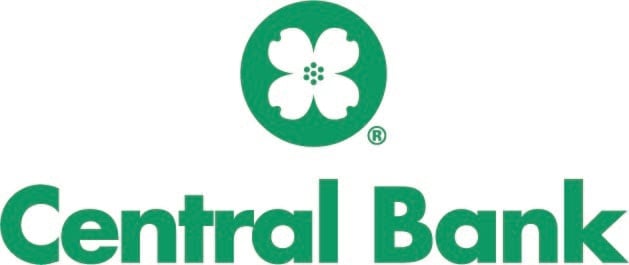Compare 30-year Mortgage Rates | Monday, January 19, 2026
Rates are current as of January 19, 2026 7:29 PM EST
APR 5.96%
0.07% 1wAPR 5.45%
0.12% 1wAPR 6.57%
0.11% 1wShow details
The Nerdy headline
Tomo’s online rates comparison tool is among the best we’ve seen for shopping rates — and both their rates and fees are competitive. While they don’t offer refinance or home equity options, the solid lineup of purchase loans could be a good fit for a wide range of home buyers, including those with credit challenges.
NerdWallet rating
5.0
- Comprehensive online rates comparison tool makes it easy to customize sample rates.
- Mortgage rates are on the low side, according to the latest federal data.
- Offers financing options for borrowers with lower credit and those without Social Security numbers.
- No refinance or home equity options.
- Loans not available in all states.
Show details
The Nerdy headline
New American Funding offers a large menu of loan products, as well as programs like first-time home buyer assistance, but personalized mortgage rates aren't available on its website.
Home loans overall
NerdWallet rating4.5
- Offers a wide variety of purchase and refinance mortgages, as well as unique buyer assistance programs.
- Its home equity line of credit can be used for a primary residence or second home.
- Average origination fees are on the high side, according to the latest federal data.
- Personalized mortgage rates are not available on the website without providing contact information.
Show details
The Nerdy headline
Midwest-rooted Central Bank offers an online application, which you can track via mobile app. But you’ll have to contact the bank for mortgage rates.
Home loans overall
NerdWallet rating
4.0
- Among the best when it comes to online convenience.
- Offers a full selection of mortgage types and products, including jumbo, home equity, and government loans.
- Claims to offer preapproval within 24 hours of loan application.
- You'll have to complete a loan application to see mortgage interest rates.
- Bank branch locations limited to the Midwest.
- Does not offer home equity lines of credit.

NMLS#1880338
APR
6.05%
APR
6.05%
Interest rate
6.00%
Est. mo. payment
$2,399/mo
Total fees
$2,048
Next Door Lending is a wholly-owned subsidiary of NerdWallet
Show details
The Nerdy headline
Next Door Lending, a mortgage broker, offers expert assistance shopping for and closing a loan, as well as specialty loans at competitive rates. Mortgages are not available in every state.
- Offers a variety of loan types, including first-time buyer programs and loans for self-employed borrowers.
- Real-time rate quotes available while working with a broker.
- Responsive customer service.
- Competitive pricing often available, especially for non-traditional borrowers.
- Does not publish interest rates online.
- No mortgage mobile app.
- Loans are not available in every state.
Show details
The Nerdy headline
First Federal Bank stands out for its exceptionally low interest rates and its emphasis on government loans. Most likely to appeal to borrowers shopping for low rates and fees.
Home loans overall
NerdWallet rating5.0
- Strong experience in FHA and VA lending.
- Average mortgage rates are on the low side, according to the latest federal data.
- Minimum credit score requirement of 580 for some loans, which is lower than some competitors.
- No mobile app.
- Home equity lending is not a priority.
- Does not offer renovation loans, but does offer construction loans.
Show details
The Nerdy headline
Home loans overall
NerdWallet rating
4.5
- Offers a variety of mortgage options, including jumbo loans, and FHA and VA loans.
- Offers home equity loans and lines of credit.
- Displays customized rates, with fee estimates, without requiring contact information.
- Doesn’t offer mortgages in all 50 states.
- Home renovation loans are not available.
Show details
The Nerdy headline
Farmers Bank of Kansas City lets you browse rates and apply online, but branches are Kansas-only. Get discounts by using the bank’s partner real estate network.
Home loans overall
NerdWallet rating
4.5
- Displays customized rates, with fee estimates, without requiring contact information.
- Offers home equity loans and lines of credit.
- Mortgage origination fees are on the low side compared to other lenders, according to the latest federal data.
- Doesn’t offer government-backed FHA or USDA loans, or adjustable-rate mortgages.
- Home renovation loans are not available.
- Mortgage rates are on the high side compared to other lenders, according to the latest federal data.
Show details
The Nerdy headline
NBKC stands out for its attractive interest rates and fees, and is primarily an online lender — though its app does not have mortgage features and chat support is not geared toward mortgage borrowers.
Home loans overall
NerdWallet rating4.5
- Competitive interest rates and fees.
- Offers most common loan types, as well as a handful of specialty loans.
- Payouts are available to borrowers whose loans don’t close on time.
- Customer service is only accessible over the phone for many mortgage customers.
- Does not offer renovation loans.
- Home equity products are not currently a lending priority.
See more options
About these rates: The lenders whose rates appear on this table are NerdWallet's advertising partners. NerdWallet strives to keep its information accurate and up to date. This information may be different than what you see when you visit a lender's site. The terms advertised here are not offers and do not bind any lender. The rates shown here are retrieved via the Mortech rate engine and are subject to change. These rates do not include taxes, fees, and insurance. Your actual rate and loan terms will be determined by the partner's assessment of your creditworthiness and other factors. Any potential savings figures are estimates based on the information provided by you and our advertising partners.
Explore historical mortgage rate trends
See how rates have changed over time to understand past patterns and economic fluctuations

Historical timeline
Loan purpose
Loan type
National average 5.96%
Today's average mortgage rates
| Product | Interest rate | APR |
|---|---|---|
| 30-year Fixed | 5.95% | 5.96% |
| 30-year Fixed FHA | 6.12% | 6.86% |
| 30-year Fixed VA | 5.53% | 5.60% |
| 20-year Fixed | 5.91% | 5.92% |
| 15-year Fixed | 5.41% | 5.45% |
| 10-year Fixed | 5.40% | 5.44% |
| 3-year ARM | 8.19% | 7.46% |
| 5-year ARM | 6.43% | 6.57% |
| 7-year ARM | 6.41% | 6.53% |
| 10-year ARM | 5.95% | 5.96% |
Accurate as of 01/19/2026.
Data source: ©Zillow, Inc. 2025. Use is subject to the Terms of Use
Today's mortgage rates | Monday, January 19, 2026
What is a 30-year mortgage?
Pros and cons of a 30-year fixed mortgage
Pros
- Lower payments. Because they’re spread out over 30 years, the monthly payments on a 30-year fixed mortgage are lower than for loans with shorter terms.
- Flexibility. If your monthly budget allows, you can make extra payments to pay off the loan faster. When money is tight, you can make the minimum payments.
- Predictability. Because it’s a fixed rate, the monthly principal and interest payments are the same over the life of the loan. Property taxes and insurance can change over time, though.
- Bigger loan. Because monthly payments on a 30-year loan are smaller than on a shorter-term loan (such as 20 or 15 years), you can borrow more.
Cons
- Higher interest rate. Because the lender is tying up its money longer, 30-year fixed mortgage rates are higher than on loans with shorter terms, such as 15 years.
- More interest overall. You pay more interest over the life of a 30-year mortgage because you make more payments.
- You risk borrowing too much. A 30-year loan lets you borrow more, which could tempt you into taking out a loan that’s too big. Or you might be able to afford the monthly payments, but lack money for vacations, dining out and other discretionary spending.
How to find 30-year mortgage rates today
30-year mortgage rates vary over time and by lender

2:12
How to compare mortgage offers
- "In 5 Years" totals how much you would spend on the mortgage in its first five years, including closing costs, principal, interest and mortgage insurance. A lower number is better.
- "Annual Percentage Rate (APR)" is a way to express the interest rate that takes closing costs into account. A lower APR is better.
- "Total Interest Percentage (TIP)" measures the total interest you would pay as a percentage of the loan amount. A lower TIP is better.
How mortgage rates are set
The difference between interest rate and APR
Learn more about fixed-rate loans:
More mortgage tools and resources
Latest mortgage news and analysis
View rates by loan type or state
Get even more specific with rates personalized to your situation







